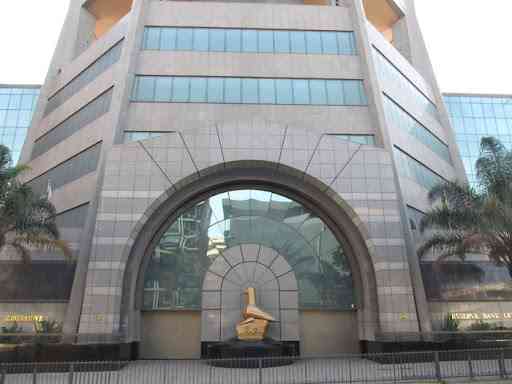
Africa’s richest man, Aliko Dangote, returned to Zimbabwe last week wielding a US$1 billion investment proposal, and indicating he had the financial muscle to turn President Emmerson Mnangagwa’s ambition of building a regional energy hub into reality.
Dangote, whose fortune the Bloomberg Billionaires Index places at US$29,8 billion, entered State House on Wednesday, nearly a decade after a similar plan collapsed under the late former president Robert Mugabe’s rule, amid bribery allegations.
Last week, he tabled a familiar package for Zimbabwe — cement and power projects. But this time, the tycoon added a fuel pipeline linking Walvis Bay in Namibia to Zimbabwe, a move that appears designed to align with Harare’s regional oil distribution ambitions.
Dangote’s southern African strategy is unsurprising. He has just completed the US$20 billion Dangote Petroleum Refinery in Lagos — a 2 685-hectare facility in the Lekki Free Trade Zone with a crude processing capacity of 650 000 barrels per day. To finance it, the group borrowed about US$5,5 billion, of which roughly US$2,4 billion had been repaid by mid-2024.
“We have just signed an agreement between Zimbabwe and the Dangote Group to do various investments in sectors such as cement, power generation and a pipeline to bring petroleum products,” Dangote told reporters.
“There are quite a lot of changes between that time when we came and now. The government is solid; there is a lot of transparency.”
Dangote’s renewed push comes a decade after his first attempt collapsed under bureaucracy and tariff disputes. This time, the billionaire is placing the pipeline at the centre of a broader continental logistics play.
In Nigeria, The Business Post rallied Dangote’s plan, while The Punch said the investment “adds Zimbabwe to Dangote’s list of destinations from Ethiopia to Zambia”.
- NoViolet Bulawayo’s new novel is an instant Zimbabwean classic
- Jah Prayzah, Zanu PF rekindles ‘lost love’
- Bank workers appeal to Ncube for tax relief
- Indosakusa marks 21-year anniversary milestone
Keep Reading
Reuters noted the pipeline would “complement the Dangote Group’s plans to establish the biggest oil refinery in the world”.
From Nigeria to Namibia, Dangote is building an oil logistics network to distribute products from his refinery across Africa. In Namibia, his group is setting up 1,6 million-barrel storage tanks for southern African markets.
Zimbabwe’s location between Mozambique’s Beira port and fast-growing markets in Zambia and the Democratic Republic of Congo makes it a natural link in that corridor. Last year, the Zimbabwe Independent reported Zimbabwe and Mozambique were finalising a US$15 million deal to expand the Beira–Feruka pipeline from 2,19 billion to three billion litres annually.
Energy ministry permanent secretary Gloria Magombo said then the expansion, spearheaded by the National Oil Infrastructure Company (NOIC), was part of a long-term plan to reach five billion litres a year and position Zimbabwe as a regional hub for fuel distribution.
“The reason why we are increasing capacity is because of higher internal demand driven by economic activity, and we are also targeting the regional market as our ultimate supply zone.”
Work on the Mozambican section had begun, while Harare finalised its phase of the project. The NOIC upgrade follows new energy infrastructure, including an ethanol storage plant in Msasa, Harare, and an LPG storage facility in Ruwa. Both NOIC and Fossil Contracting, which constructed the LPG plant, fall under the Mutapa Investment Fund, which manages over 30 state-owned enterprises.
Dangote’s proximity gives Zimbabwe new opportunities. Harare is seeking private capital to complete its pipeline expansion and connect new storage hubs to regional markets. His entry could inject that capital while linking Zimbabwe into a continental oil distribution chain.
Dangote’s 2015 bid included a proposed
2 800MW coal plant at Sengwa through Black Rhino Group, an infrastructure firm backed by US private-equity giant Blackstone. At the time, Dangote’s associates decried “bureaucratic inertia and expectations of facilitation fees.”
In 2018, his Zimbabwean representative, Josey Mahachi, told The Financial Gazette: “For you to invest in Zimbabwe, you had to grease some people’s palms, which is something that Dangote doesn’t want.”
The new administration insists the environment has changed — and Dangote himself affirmed this. But analysts warn that governance, ownership and tariff clarity remain potential spoilers. Yet overall, they see a turning point for Zimbabwe. This is the level of trust analysts place on the billionaire’s word.
Stevenson Dhlamini, economics lecturer at National University of Science and Technology said the oil pipeline project is a “masterstroke of economic geography”.
“For a land-linked nation such as Zimbabwe, diversifying its access to global markets is a paramount strategic objective. Historically reliant on corridors through Mozambique and South Africa, this new pipeline to Namibia’s Walvis Bay opens up an entirely new Atlantic-facing trade axis. This is more than just a pipeline; it is the backbone of a new economic corridor. It enhances regional integration on an east-west axis, fostering trade and interdependence between Zimbabwe and Namibia,” he said.
Dhlamini said the pipeline had the potential to create “positive network externalities, spurring the growth of logistics, services, and new industries along its path”.
“By providing an alternative route for critical energy imports, it reduces logistical vulnerabilities and enhances Zimbabwe’s economic sovereignty. Dangote’s bold move has effectively opened the door. He has initiated a new narrative for Zimbabwe. If his projects are implemented successfully, it will create a proven model of success, demonstrating that large-scale, long-term capital can thrive in the country. This would do more to restore broad-based investor confidence than any policy statement alone. The journey has begun, and the successful implementation of these projects will be the true testament to a new economic dawn in Zimbabwe pioneered by the Second Republic,” he added.
Tapiwa Sibanda, head of Strategy at Trade Winds, said Dangote’s pipeline ambitions fit neatly into Zimbabwe’s declared policy of becoming a fuel distribution hub. But he said success would depend on clarity around pipeline ownership and cost recovery.
Rudo Moyo, an energy economist at Economic ViewPoint, added the deal could redefine Zimbabwe’s place in regional energy logistics, “but authorities must avoid the policy reversals that derailed earlier private-sector interest”.
Chenayimoyo Mutambasere, economist at Africa Centre for Economic Justice, said an additional fuel pipeline into Zimbabwe would offer important economic advantages by reducing transport costs, improving supply security and easing pressure on foreign currency outflows.
“Pipelines remain the most efficient and cost-effective means of moving petroleum products over long distances, and in the long term they can significantly stabilise the domestic fuel market,” Mutambasere said.
“However, any comment on Dangote’s proposed investment must be qualified by the persistent lack of transparency and parliamentary oversight that characterises large-scale infrastructure deals in Zimbabwe. Without full disclosure of the financing structure, ownership model, repayment obligations and the identity of the contractors involved, it is impossible for the public, let alone analysts, to form a complete and informed view of the proposal.
“This concern is not theoretical. Zimbabwe has been here before. In 2012, a similar pipeline proposal was put forward by the then minister of Energy. The project collapsed after Emmerson Mnangagwa himself challenged it, specifically citing the absence of parliamentary scrutiny and the opaque nature of the contracting process.”
Mutambasere said the 2012 precedent underlined the need for clear governance frameworks, competitive tendering and full legislative oversight before any binding commitments are made.
“It is also important to manage expectations. Pipeline investments do not yield overnight returns. These are capital-intensive projects with long repayment periods often stretching 15 to 25 years, and their economic viability depends on predictable throughput, regional cooperation and stable regulatory conditions.
“If the Dangote-backed project is structured transparently, competitively and with strong parliamentary oversight, an additional pipeline could provide genuine economic advantage. It could:
l Reduce fuel transportation costs compared to road haulage;
l Improve the reliability of supply;
l Lower the risk of cross-border logistical disruptions;
l Strengthen regional trade integration; and
l Support industrial productivity by stabilising fuel availability.
“In short, the potential benefits are real, but Zimbabwe should not repeat the mistakes of past opaque deals. A project of this scale must be subject to full public, parliamentary and regulatory scrutiny to ensure that it serves national not private interests.”










